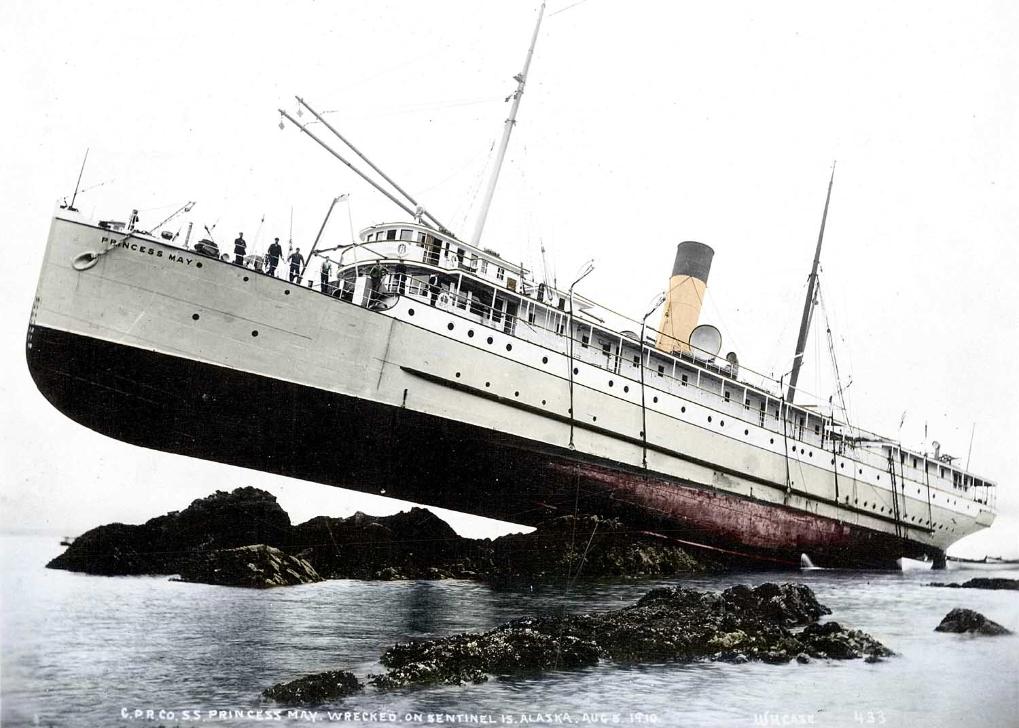In August of 1910, after brothers Nazaire and Raoul Poulin had returned home to Quebec, and with a long and lonely winter approaching, Romeo Poulin made his way from the gold fields of Dawson to spend a week of whoring at Ketchikan where the small fishing village featured a very active red light district.
Miners would leave in one of two ways to make their way to Ketchikan. They could catch a vessel that would leave Dawson on the Yukon River, traveling up to the Bering Sea. They would sail across the Gulf of Alaska and down the Inland Pass which was a corridor of rocks that blocked out ocean winds and minimized severe storms, not that all risk was ever eliminated.
The second and cheaper method was for miners to walk or ride down the White Pass and Yukon Railway, and make their way to the port of Skagway where they could catch an ocean liner heading to Seattle or points east. These ships also navigated the Inland Pass which gave some protection to low-seated rocks and ocean blows. This is the route that Romeo Poulin used in August 1910.
With a heavy fog, and as if God had ordered it up, the lowest low tide of the year caught the Princess May as she foundered near Sentinel Island at midnight.
As it was, the Princess May stopped using skunk oil; instead, she used electric lights – that would go black if the two screw engines stopped. And they did. In the black of midnight, amidst thick fog, the steamship caught on reefs, rising at a 23 degree angle. Her photo traveled around the world on front pages of newspapers, caught at low tide when the treacherous rocks were visible.
This is a true account of the Foundering of the Princess May with one of her passengers, Romeo Poulin, down from the goldfields of Dawson. Soaked and tired, everyone was picked up the next day and returned by a north-going vessel from whence they came.
